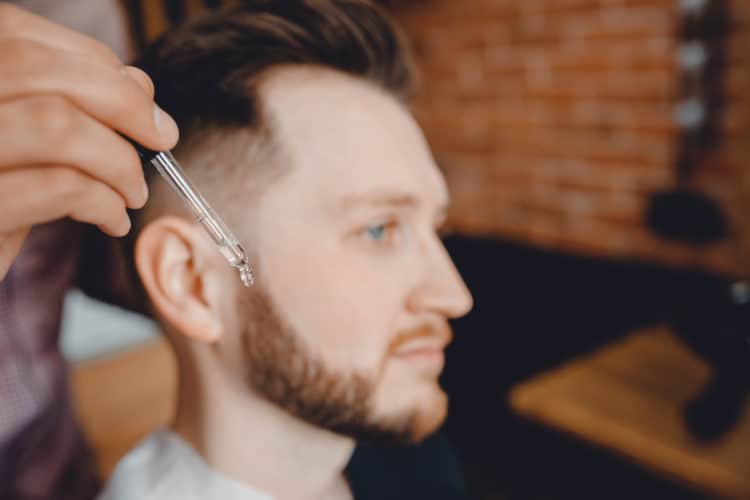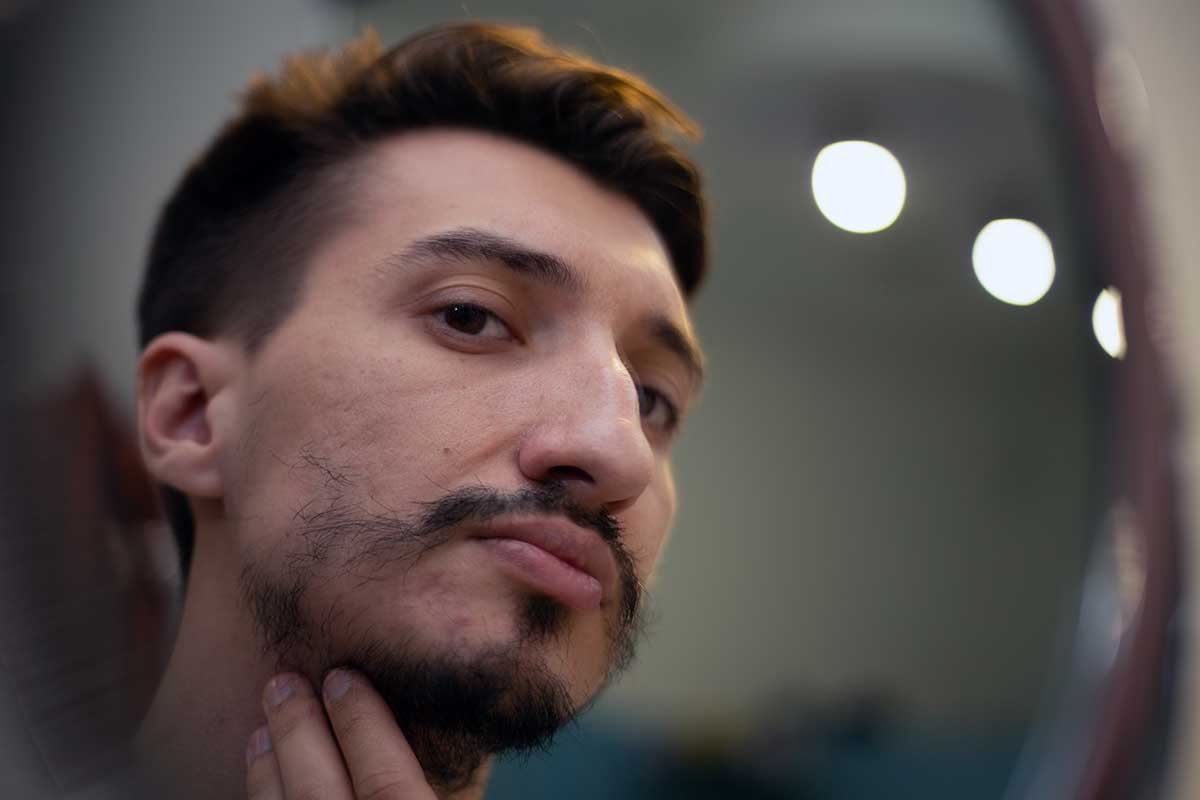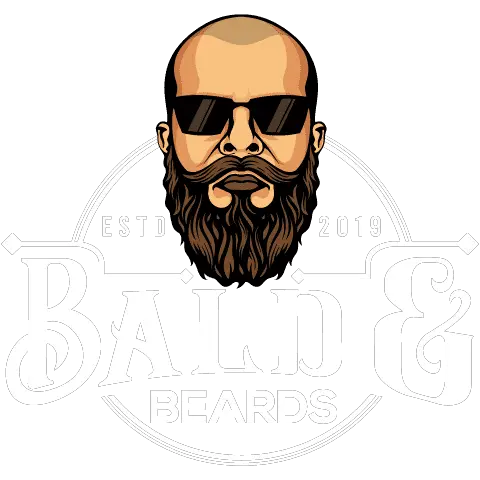Have you been noticing that your beard hair is falling out faster than it used to? Are you worried that you have a hair loss condition? If so, you’re not alone.
Beard hair loss can be caused by many different factors, and understanding them is the first step towards regaining your beard.
In this article, we’ll look at the most common causes of facial hair loss, provide beard growth tips and how to deal with growing issues. So we’ll show you how to hold on to that beard! Keep reading!
What Causes Beard Hair Loss?
Facial hair loss is a common problem that affects a lot of men, and it can be frustrating. Luckily, there are several factors that can contribute to losing beard hair. Some of these include genetics, age, and hormones.
If you’re experiencing a lot of hair loss, it’s important to see your doctor for an evaluation. He or she will be able to rule out any underlying causes and provide you with the best treatment options. In the meantime, make sure to take care of your beard area by ensuring proper circulation and eliminating excessive dryness and dandruff.
Why Does Beard Hair Fall Out?
Beard hair loss is a common problem that affects men of all ages. While there are many possible causes, some of the most common are genetics and age. To prevent beard loss, make sure you’re using the right products and taking care of your skin properly.
For example, avoid using harsh shampoos and conditioners, and be sure to moisturize regularly. If you do experience face hair loss, don’t panic – there are many solutions available on the market.
Some of the most popular include beard balms, beard vitamins, beard growth creams and serums. If you’re looking to restore your beard, be sure to consult a dermatologist who will recommend the best course of action for you.
1. Natural Facial Hair Growth Cycle
Beard hair loss happens during the natural facial hair growing cycle. The cycle is controlled by various hormones and genetics, and can be affected by a few factors – such as age, hormones, and environmental conditions.
If you’re experiencing a thin or patchy beard, it’s important to consult with your physician in order to rule out any underlying issues. Once identified, the doctor may recommend treatments such as hormone therapy or hair transplantation procedures.
If you’re still experiencing a significant loss of your beard despite following these prescriptions, lifestyle changes like quitting smoking can also help.
2. Low Testosterone and DHT

Hair growth on your body, including your beard, is reliant on testosterone. When testosterone levels are low, the production of beard hair can decrease.
And if baldness or thinning occurs in areas like the crown or on the face, it’s likely that DHT (dihydrotestosterone) is also involved.
Both testosterone and DHT are affected by various factors – such as medications, illness, stress and age. In some cases, treatment options may include steroid injections to increase hormone levels or surgical procedures to reduce the amount of DHT in the scalp.
If you’re experiencing significant beard shedding – especially around your chin, neck and jawline – it might be a good idea to see a doctor for an assessment!
3. Aggressive Dieting and Micronutrient Deficiencies
If you are experiencing hair loss, it’s important to see a doctor for an evaluation. There could be underlying causes that need to be addressed and treated.
Losing beard hair might also result from an aggressive diet or deficiencies in key micronutrients. If left untreated, these problems can worsen and lead to permanent hair loss. In order or preventing this from happening, make sure you’re getting enough sleep and eating a balanced diet rich in vitamins and minerals.
4. Chronic and Prolonged Stress
Chronic and prolonged stress can cause hair shedding in both men and women. It affects the hair follicles, leading to bald patches or even beard thinning.
The best way to prevent this is by identifying the signs of stress and dealing with them head-on. There are a few things you can do to help restore your beard’s health, like a better diet and exercise.
5. Aggressive Beard Care Routine
There are a few key beard care tips you should remember to keep your hairline safe and healthy. Firstly, shampooing too often can strip the hair of its natural oils, causing it to fall out in large chunks.

Secondly, hot showers or baths are not recommended, as they can cause damage done to hair cells that result in bald patches on the face or neck.
Thirdly, avoid over-styling your beard – this will only lead to breakage and losing hair!
6. Facial Alopecia Areata
Facial alopecia areata is a condition that leads to beard hair loss. It’s common and affects people of all ages, but it typically occurs in middle-aged adults.
There are many causes, including genetics, environmental factors and medication usage. You can treat it by using minoxidil or laser therapy. Be sure to regularly check for any signs of facial hair shedding and take appropriate steps to prevent it from happening in the future.
7. Alopecia Barbae
Alopecia barbae is a condition that causes bald patches and is a specific form of alopecia areata. There are three stages that make up the catagen phase of your beard growth cycle.
Catagen establishes a new resting state of hair loss on the face. It’s the most common cause of beard loss.
There are treatments available to restore lost hair and improve your appearance. Always keep a skin care routine in check to prevent further damage to your beard hairs, as this will help preserve them for longer.
8. Genetics and Family History
Genetics often play a role where there’s a family history of alopecia, asthma or allergies.
9. Other Possible Causes
You are also more susceptible if you have an autoimmune condition like diabetes type 1, psoriasis, lupus or even thyroid disorders or the skin condition vitiligo.
What is Alopecia Barbae?
Alopecia barbae is an autoimmune disease, causing small circular-shaped patches of hair loss in the beard area. Follicle hair loss occurs when the immune system attacks hair follicles from excessive stress. Treatment may address any underlying conditions and include topical scalp medications as a remedy.
What Causes Alopecia Barbae?
If you’re experiencing beard hair loss, it’s important to seek medical attention as soon as possible. This includes checking for potential causes of hair loss from the autoimmune condition alopecia barbae.
The autoimmune disorder Alopecia barbae is a condition that affects the skin on the head and face. It’s often caused by a combination of genetics and other factors, such as vitamins D and B12 deficiency and stress levels. If left untreated, alopecia barbae can progress and lead to complete baldness.
So, if you’re experiencing any of the following symptoms, it’s best to get checked out by a doctor: thinning on the scalp, patches of baldness, or thinning hair on the head. In the meantime, you can take steps to treat the condition by addressing any underlying causes.
How to Treat Alopecia Barbae?
Losing beard hair is a common problem, and one that can be difficult to treat. Fortunately, there are many treatments available, and it’s best to consult with a dermatologist first.
Some of the most common treatments include laser therapy and minoxidil injections. Keep a diary of your symptoms to track their progression over time and consult with a dermatologist to find the best treatment for you.
Stages of Facial Hair Growth
Facial hair grows in stages, and each cycle lasts three to four months. During this time, your beard will go through four stages: 0-3, 3-6, 6-12, and 12+ inches.
Since your facial hair adheres to a similar growing phases – anagen, catagen and telogen phases, you’ll naturally lose facial hair daily.
- The first stage is the vellus phase, during which beard and moustache hairs are barely visible. This period can last anywhere from 2 to 6 months, but typically subsides within the first year or two after you grow facial hair.
- The second phase is called terminal growth, in which thicker and longer hairs grow in profusion. Terminal growth usually lasts about three years but can sometimes continue for up to five years depending on your genetic makeup and environmental factors (such as exposure to UV light).
- The third phase is called transitional growth, during which finer hairs become gradually less dense until they eventually disappear altogether. This happens around age 25-35 for most people, although it may vary depending on your skin type and lifestyle choices.
- And finally, the fourth and final stage – cessation – marks the end of any detectable hair growth whatsoever! Although this might happen much sooner if you make strategic changes to your grooming routine or diet.
Generally speaking, most men experience a loss of hair around the six-month mark as their follicles reach their maximum capacity. If you’re experiencing patches of hair loss or your beard is losing hair at an accelerated rate, there are some things to remedy the situation.
Always consult with a doctor to rule out any underlying health issues by getting a blood test. If the problem isn’t medical, then look at your beard’s growth cycle and figure out what might cause the hair loss.
Will Balding Affect Your Beard?
Hair loss can be a bit of a daunting topic, but it doesn’t have to be. First and foremost, hair loss can affect all body hair, including the beard. However, there are many causes for hair thinning or loss, and it’s not always easy to identify which one is causing problems.
Some of the most common causes of hair loss include stress, hormones, and chemotherapy treatments. If you’re experiencing severe hair loss, see a doctor to rule out more serious issues.
At the end of the day, hair loss is a natural occurrence that happens to everyone at some point or another. However, by being proactive and taking measures to prevent hair loss, you can greatly improve your chances of seeing healthy hair production down the road.
Treatment Options If You’re Losing Your Beard
Losing hair on the beard is a common problem that affects a large percentage of men. If you’re noticing that your facial hair is falling out in large patches, it’s time to get treatment. There are a variety of treatments available that can help restore lost beard density and texture.
Some methods are surgical, while others are non-surgical, so be sure to talk to a medical professional about your specific situation. Regardless of the treatment you choose, be sure to follow the instructions carefully to ensure success.
At Home Options
If you’re noticing bald spots or thinning in your beard, it’s time to take action ASAP! You can try following some of these tips to help improve beard’s health:
- Trim your beard regularly to keep it healthy and trimmed.
- Apply a beard oil or balm every day to keep it moisturized and looking its best.
- Use a detangler and conditioner for regular brushing to eliminate knots and tangles.
- Use a beard comb to remove any strays or dead hair from the surface of your beard.
- Get rid of excess hair using hair loss shampoo and treatments.
- Take beard regrowth supplements like Biotin and Zinc.
Beard Transplant
Beard transplant for beard loss is a procedure that can help restore the appearance of facial hair. This surgery replaces lost hair with new, healthy follicles and restores an individual’s natural facial features.
If you’re losing a significant amount of beard hair, it might be time for a beard transplant. There are several factors to consider before undergoing this treatment, such as the condition of your existing scalp and whether or not you have any other medical conditions that could complicate the surgery.
Minoxidil
Facial hair loss is a common problem that many men face. While there are various treatments available, minoxidil is the most commonly prescribed treatment for this condition. It works by increasing blood flow to scalp and regrowing lost hair.

Apart from scalp hair, minoxidil can also help treat other forms of baldness, such as alopecia areata or male pattern baldness. However, it should be noted that side effects may occur while taking minoxidil, including skin redness, dryness, and itching. You need to take it daily for the best results.
Low-Level Laser Therapy for Beards
Low-level laser therapy is a non-surgical treatment shown to be effective for scalp hair regrowth. This therapy uses low levels of lasers to target hair follicles and promote hair growth. It can be used on its own or in combination with minoxidil treatments.
However, it should be noted the science evidence on LLLT for beards is not substantial and results may vary from person to person.
Corticosteroids
If you are suffering from a beard growth problem, corticosteroids or “steroids” may be a solution for you! These drugs reduce inflammation in your beard area and help face hair to grow back normally.
While corticosteroids can be taken orally or via injection, most people find injections are the easiest and most convenient way to take them. Depending on your condition, this treatment might need to be taken for a while before any actual results, but eventually you’ll see dense hair returning to your beard!
Conclusion
If you’re losing beard hair, there are likely a few causes and ways to stop it and prevent it. By understanding the causes and taking appropriate steps to prevent further hair loss, you can restore your beard to its former glory!
FAQ
How do I stop my beard hair from falling out?
A few tips on how to stop your beard hair from falling out include, drink plenty of water to keep your skin hydrated and hair follicles healthy.
Eat healthy foods high in proteins and vitamins B6 and B12. Take vitamins as directed by a doctor to help support hair growth and follicle health. Reduce stress levels and get regular exercise to improve circulation and stimulate new growth.
Do beard hairs grow back if they fall out?
Yes, beard hairs can sometimes fall out, but they usually grow back in within a few weeks under normal circumstances. Most people who lose hair from their beard usually find that it grows back faster if they take care of their hygiene and follicle health.
Poor hair hygiene can affect beard health, particularly for those with sensitive skin. Improper washing of the hair with soap and water can lead to hair follicle saturation and clogged pores that provide an ideal environment for infection and bacteria growth.
Why do men lose hair in their beard?
There are a few reasons why men lose hair in their beard. The most common reason is poor beard grooming and lack of attention to detail. Other causes can include genetics, hormonal changes, stress, and even the use of certain medications.
Why does my beard hair pull out so easily?
There are several common causes for beard loss, and it may start with dryness or a deficiency in oils. To solve the issue, apply a serum made of omega fatty acids to your face and neck area twice a day. This will help to improve skin hydration and growth, and promote a thick beard.
In addition to this, make sure you’re eating plenty of vitamins B6 and B12, which are essential in helping skin grow and keep hair follicles healthy. Avoid using harsh shampoos that strip away natural oil from your scalp, use gentle products, avoid hot showers and keep your beard clean at all times!


